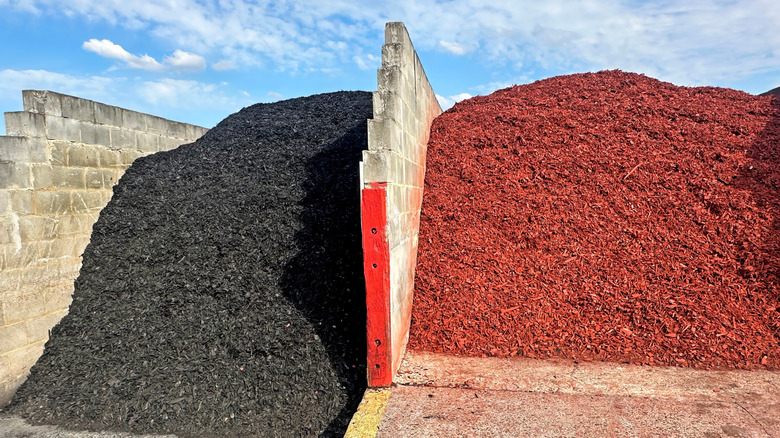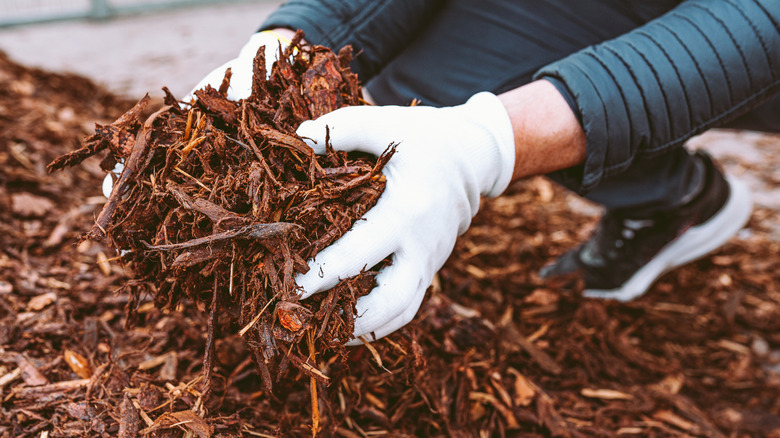Avoid This Type Of Mulch If You Don't Want Your Garden Looking Outdated
Step into an outdated house, and you'll know right away. The giveaways: shag carpet, wood paneling, and laminate countertops, to name a few. These design features will likely give you clues to when the home was built. In the same way, the landscaping industry also follows trends such as color palette, plant choice, hardscaping materials, or even garden separation ideas — all of which could be telltale signs that your garden is a bit outdated.
Recently, landscape professionals are seeing more of an emphasis on natural and free-flowing landscapes, with less focus on a structured aesthetic. (Think whimsical cottage garden versus a formal botanical garden.) The trending color scheme reflects more subtle earth tones — reflective of Pantone's Color of the Year, Mocha Mousse.
With this in mind, you may want to avoid laying down red mulch if you want to be on trend with a more natural, understated aesthetic. Many landscaping experts and color theory designers feel like red mulch is out of place, and draws too much attention — and not in a good way. In fact, mulch shouldn't be considered the main element of garden design. The plants and ground cover should be. In any design option, red can be distracting, attention-seeking, and worst of all, it competes with the flowers and plants that the mulch should be complementing.
Choosing an alternative to red mulch
In the early 2000s, red topped the mulch color charts, dominating its black and brown counterparts. This color was particularly popular in Southern regions, while gardeners in the Northeast and Midwest favored black and brown mulch. However, as the years progressed, red mulch continued dropping in popularity, as brown and black competed to become the top choice.
Aesthetics aside, dyed mulch of any color actually isn't completely safe for your yard. The dyed wood is typically made with recycled wood waste, like pallets, old buildings, or lumber treated with chemicals designed to preserve the wood. Over time, the mulch can leach dye and toxins, potentially harming the plants, soil, and other valuable players in your garden's ecosystem. Plus, if you have a furry family member, you need to consider a pet-friendly mulch. If you are set on using dyed mulch, look for brands that use safe dyes, are eco-friendly, or use untreated wood or shredded bark — and go with brown or another subtle color that fits the trend of having a natural-looking garden.
Organic or all-natural wood mulches are suitable alternatives to dyed mulches. They serve the same purpose of reducing weeds, preventing evaporation, retaining moisture, and making your garden look tidy and attractive. If you're concerned about the dangers of black mulch, use compost instead. The flowers will look more intense against the dark material, and your soil also will thank you for the extra nutrients. Whatever you decide, aim for a cohesive look, keeping in mind that the mulch should spotlight — rather than overshadow — your plants.

